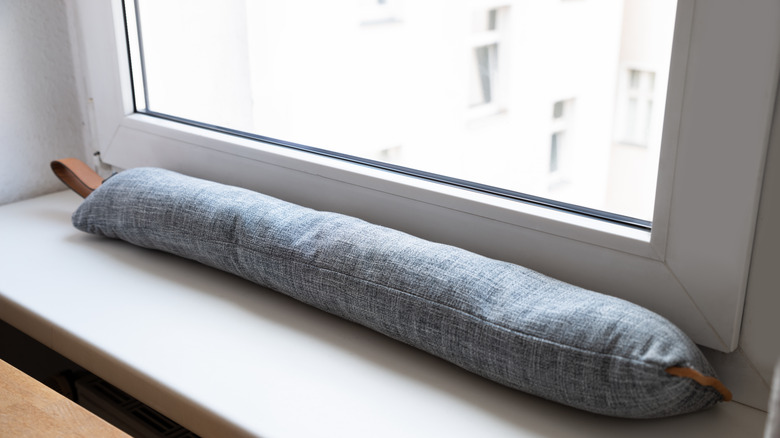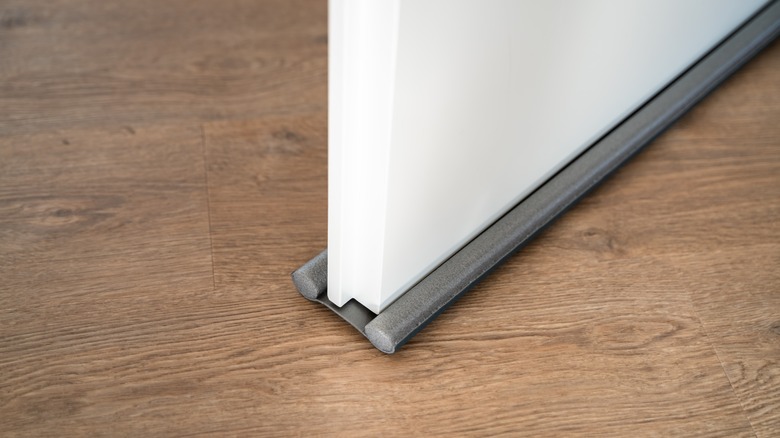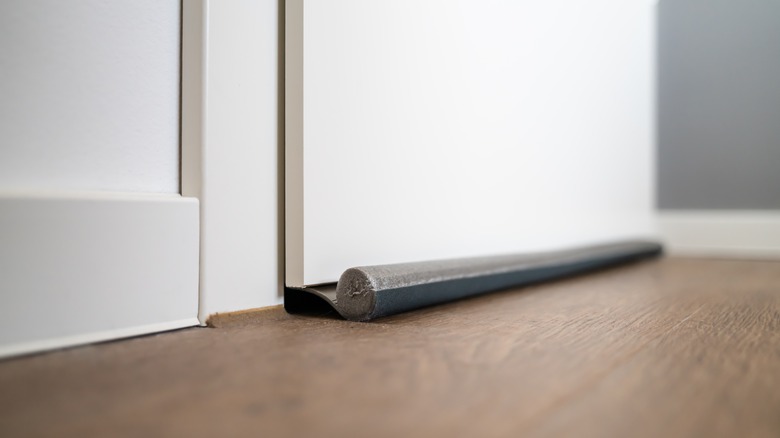Do Door Draft Blockers Really Work?
Drafty doors tank energy efficiency in your home, which can run up your heating bill significantly. But this doesn't mean you are doomed to bundle up in blankets or shell out major cash to replace your exterior doors. In fact, the US Department of Energy says that simply eliminating drafts can save between 5 and 30% on energy costs (via ABC News). There are many solutions for winterizing doors to keep the cold out, and one of the quickest fixes is to buy or make a draft blocker.
The premise is simple and timeless. Draft blockers help seal up the bottom cracks of doors by placing insulating material between the gap and your inside space, blocking breezes in their tracks. And with the right materials lining the entire door length, they can be quite effective. Read on to find the right door draft blocker for you, and learn how to buy or make one for your home.
Types of door draft blockers
Door draft blockers come in a few different styles. Most are relatively inexpensive, and if you're crafty, you can probably whip one up at home. The simplest type of door draft blocker is a long, snake-like pillow with insulating material inside. You simply place this draft blocker at the bottom of your door to keep breezes out. If you are handy with a sewing machine, this type of draft blocker should be an easy DIY project (plus, you can pick out a cute fabric to cover it that matches your interior). One downside to using pillow stoppers is having to move the pillow every time you open or close your door. One workaround for this is to use magnetic strips or adhesive velcro to attach the pillows directly to the door.
A door sweep is a draft blocker attached to your door, and it comes in three different styles: strip-, bristle-, and under-door sweeps. All About Doors notes that strip door sweeps are an effective and convenient style, and are generally easy to install. Because they are fixed to your door, sweeps can be a little less cumbersome than pillow stoppers that are not. One last type of door draft stopper is the double-sided version. Along with keeping your interiors warm, this type of breeze blocker is also great at keeping out unwanted sound, though it has a more noticeable presence than the other styles.
Tips to buy (or make) a door draft blocker
Whether you make or buy a draft blocker, the most important thing to remember is to get your measurements correct. A draft blocker that is too small will still let breezes in, and one that is too large will make opening and closing your door awkward. When buying a draft blocker, make sure it is right for your door type. The size of the gap at the bottom of your door should be fully covered by the blocker or door sweep for it to be effective.
When making a pillow draft blocker, you can choose between many different types of insulation materials and coverings to get the style that suits your home. Happy DIY Home suggests stuffing the pillow with rice, sand, beans, and a few other materials. According to Hello Sewing, it's best not to overstuff your draft stopper. If you do, it will be overly taut and will not fit closely against your door. And if you happen to have pool noodles lying around, this video demonstrates how to make double-sided breeze blockers with them.



